BIOS (Basic Input and output system) is the tiny chip on the motherboard, which kick-starts your PC when you press the power button. It makes your system ready to use by initializing different hardware on your systems like CPU and other chipsets on your motherboard. Nowadays, UEFI (Unified Extensible Firmware Interface) has replaced these BIOS chips, which has the same functionality as BIOS.
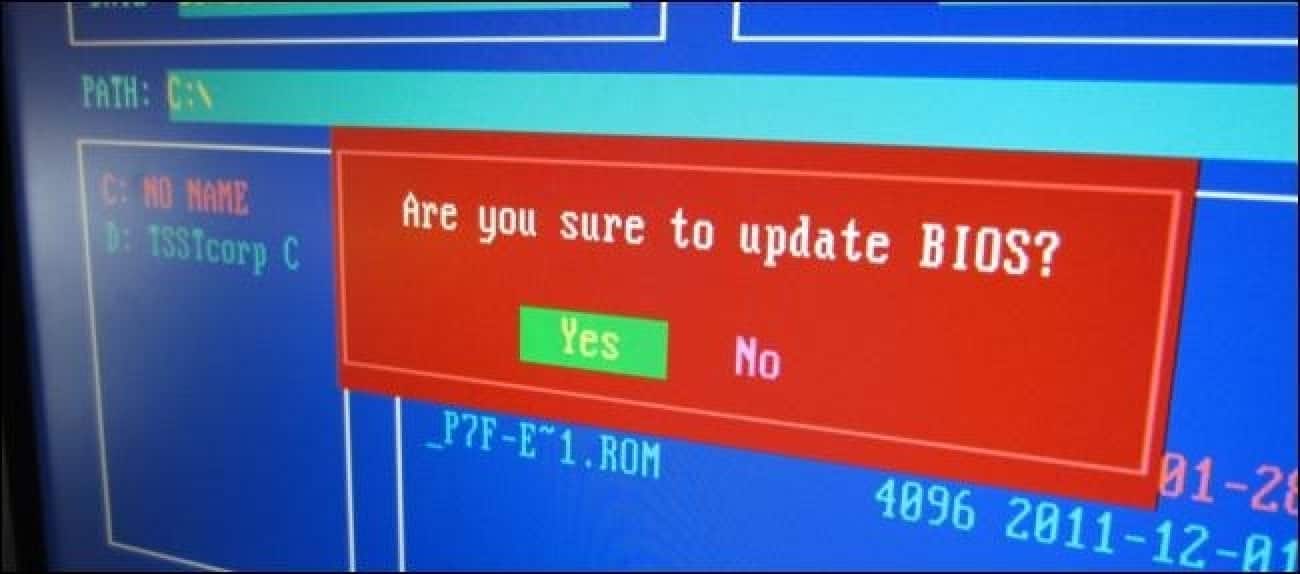
If you think updating BIOS on Windows is the solution to resolve any issue, then you are the one out of thousands of people ready to gamble. You need to give a good look at the Pros and Cons of the result if you update BIOS on Windows 10 before taking action and you can start with this how to boost your windows 10 system performance using simple tips. This will help in overall enhancement.
Is updating BIOS advisable?
We have listed down the pros and cons of updating BIOS on Windows. Please take a few minutes to go through it as it will help you make a decision, and there will be no regrets later on.
Pros:
- If new hardware is added like processor, RAM, or if your PC’s processor is upgraded, then BIOS updates or flashing BIOS will help the motherboard correctly identify new hardware.
- Enhances the security of PC and protects them from tampering and viruses.
- Manufacturers can sometimes use BIOS update as a method to deal with issues of the motherboard and make it bug-free.
- BIOS update enhances CPU performance.
- BIOS update improves memory compatibility.
Cons:
- Failure of the BIOS update will leave you with nothing! You have to buy a new PC/Laptop altogether.
Still, if you cautiously follow each step, then BIOS can be updated in the following three ways.
- Update BIOS on Windows using a USB drive.
- Use a Windows-based program to update BIOS on Windows.
- Create Dos USB drive and update BIOS on Windows using it.
Warnings! Before you update BIOS on Windows 10.
Before even reading forward, please go through these warnings and consider if you really have to update your BIOS.
- There should be no power cut-off while BIOS is updating, so ensure that you have UPS back-up if you are doing it on PC, and fully charge your laptop’s battery if you are doing it on your laptop.
- Keep ready an empty USB drive (not required if you follow the window-based program to update BIOS).
- Continuous internet connection.
- Disable all the security programs as it sometimes interrupts during the updating process, and will cause all sorts of problems.
Please follow the below-given procedure step by step carefully to update BIOS correctly:
Update BIOS on Windows 10 using a USB drive
Please follow the below-given steps carefully to update BIOS on Windows 10 using a USB drive.
- Back-up of previous BIOS setting:
- Boot your computer and press DEL, F1, F2, or any other appropriate key depending on your System’s model to access BIOS settings, for that be keen to notice the message that tells you to press some key to open the SETUP option.
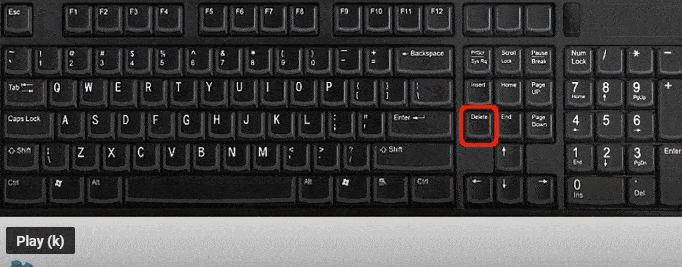
- Note down any essential data like saved passwords, boot order, etc., as it will help to restore previous settings after BIOS is updated.
- Open System Information:
System information comprises relevant data like Manufacture name, model no., BIOS version of the System, which is required while updating the System.
- Press “Window key +R” to open the “Run” box.
- Type “msinfo32” and then click “Ok” to open the System Configuration window.
- Check BIOS version:
Note down the name of System Manufacturer, model number, and BIOS version.
In the below case, as you can see, BIOS version no.; is” System Manufacturer + System model no.+ BIOS version + Date.
ASUSTeK COMPUTER INC. X401A. 211.8/20/2012.
Note: If you have a custom-build computer, you will need a motherboard model number instead of the System’s model number using any hardware information tool like CPU-Z.
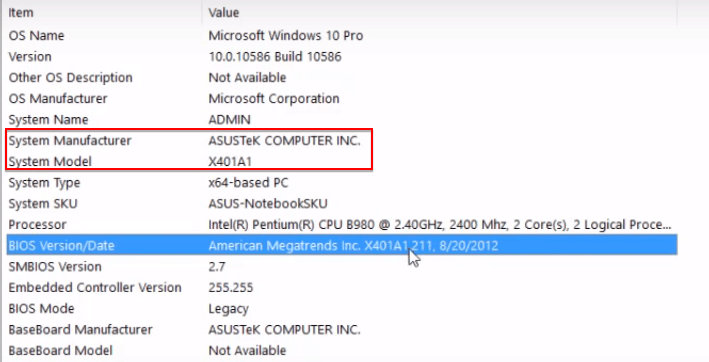
- Search updated BIOS version’s file:
- Type System Manufacturer’s name, model number, and ‘BIOS’ on Google and click on the search button.
- Then select the appropriate link; usually, it is the top-most link.
- Note: It is vital to download the BIOS update file from the official manufacturer’s website of your model.
- In the below case, after typing ‘ASUSTeK COMPUTER INC X401A BIOS’.
- We are picking up the manufacturer’s website, https://www.asus.com/Laptops/X401A/specifications/.
- Download BIOS file:
- Depending on the website, you may have to choose and open the “Updates,” “Download,” “Support,” “Driver & Tools,” or “BIOS” column.
- In the below case, after opening the support/download column, the BIOS link is displayed.
- Choose the “BIOS” link.
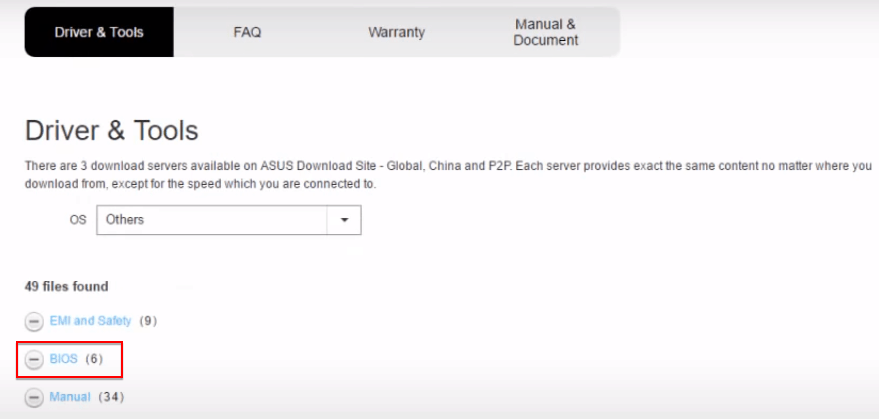
- Then select the latest version of BIOS, mostly it is the top-most link. In my case, I am choosing the 212th version of BIOS, as I already have a 211 version on my PC.
Note: Ensure that the BIOS update file is precisely for your System’s motherboard model.
- Then click on the download link and download an executable file of BIOS updates in a folder of your computer. It will take a couple of minutes.
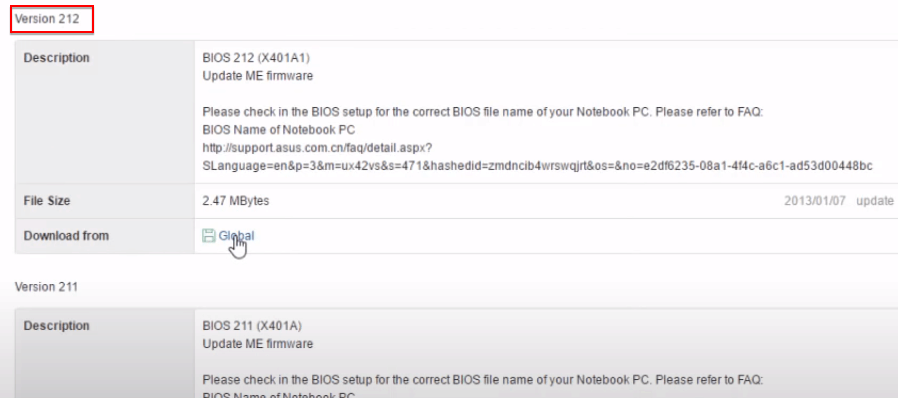
- Extract files in USB drive:
- Keep USB Drive Plugged-in to your computer during the process to save the BIOS file.
- Extract the BIOS update file from the folder of your computer to the USB drive.
- Note: Ensure your USB drive is empty, and it has no other files.
- In my case, the file “X401A1AS.212” is copied in my USB drive.
- Update BIOS:
- Check “readme file” that mostly comes with the particular BIOS update as the process is different for each motherboard.
- Then reboot your PC by pressing DEL, F1, F2, or any other suitable key.
- Click on the “Boot” tab.
- Enable “Launch CSM” and “Launch PXE OpROM” options.

- Then click on “Advanced tab” and choose the option Start Easy Flash.
- Keep your USB plugged during this process, so that BIOS can see an update file that was saved in your USB drive.
- You will be shown options to choose the BIOS update file; here, I choose option 1 to execute X401A1AS.212.
- Then click the “enter” key.
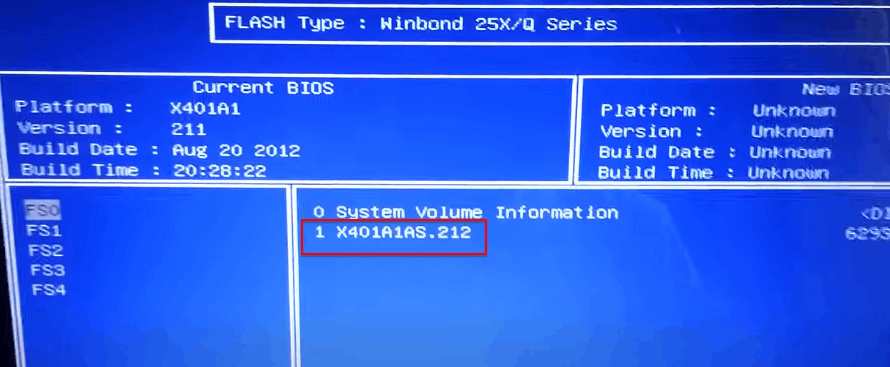
- Your system will take the last confirmation before updating BIOS; just click on the “yes” option.
- Wait for a few minutes till BIOS is updated, make sure there is no interruption during this process.
- Reboot PC:
Once completed, your PC will automatically shut down. You need to restart it.
- Cross-check BIOS’s version number:
Open System Configuration, as described above in the 2nd step, and check for the BIOS version. Voilà! BIOS version is updated!.
Limitation for the above method:
If you download and use incorrect BIOS update files, then it will kill your motherboard and make your PC completely non-working.
Use the Windows-based program to update BIOS on Windows:
This is the simplest way to update BIOS on Windows 10. Many manufacturers provide an in-build interface to update BIOS in just a few minutes. For e.g., the WinFlash utility program runs in the Windows environment to restore, refresh, and back-up BIOS.
The following steps are for Updating BIOS on the ASUS model of PC/Laptop using WinFlash.
Open WinFlash:
- Download and install Winflash from here.
- Search for “WinFlash” application from “C:/Program Files x(86)/ASUS/.
- Double-click on “WinFlash” to start it.

Choose BIOS update Source:
Once the WinFlash app starts, it will ask to choose from two options.
- Choose BIOS from the web option.
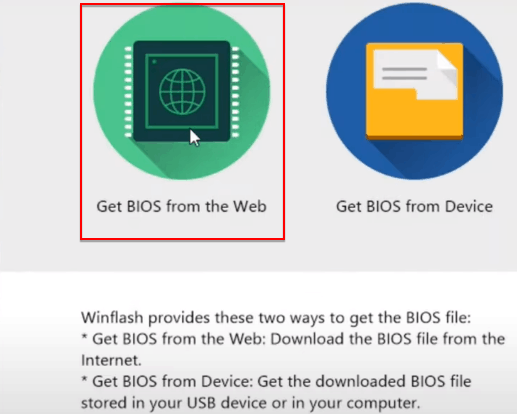
Choose BIOS version:
- The application will automatically search on the web and retrieve the latest version of the BIOS file for your System.
Note(You should have a continuous internet connection to update BIOS on Windows correctly.)
- It will prompt the message displaying the current version and update the version of BIOS.
- Click on the update option.
There it is! BIOS update is done. You can cross-check it by checking the BIOS version in System Information.
Limitation of this method:
Installed software can interfere in the update process and cause BIOS updates to fail and crash your PC.
Create Dos USB drive and update BIOS on Windows using it.
This is the old-fashioned, tedious way to update BIOS on Windows.
- You need to create a bootable flash drive using an external tool like Rufus.
- Then copy the BIOS update file into that drive.
- Execute the batch file with extension.bat provided with the BIOS update file to start the update process.
- Sometimes scripts have to be downloaded separately from the web.
Bottom line: Updating BIOS on Windows is a critical process and you should go for it one only if there is no other workaround to resolve some specific hardware issues. And you have to double-check each step before implementing it to avoid any failure.

